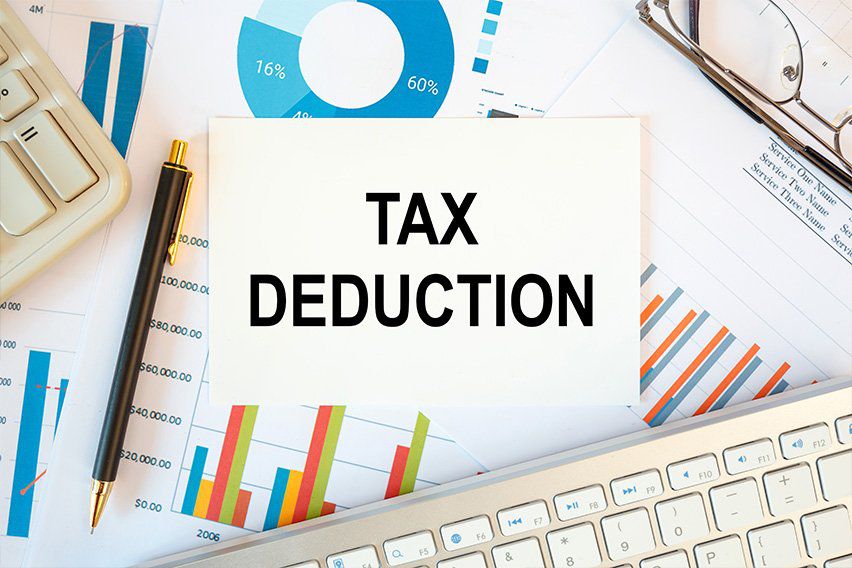As a landlord, you own more than just buildings.
Landlords own all sorts of property, including land, outdoor structures, and personal property. Understanding the different types will help you come tax season.
Personal property is any tangible property used in your rental business besides land, buildings/structural components, improvements, and permanent structures. Personal property can be inside your rentals (furniture, kitchen appliances, TVs) or outside (lawn equipment, office furniture, cars, computers).
You need to report all these items to the IRS. Then you typically depreciate them, meaning you subtract portions of the expense from your rental income over five or six years as the item wears out.
However, the Tax Cuts and Jobs Act (TCJA) made most personal property fully deductible—that is, you can subtract the entire expense from your income all at once. Deductions are extremely beneficial, as you’ll pay less in taxes.
Being aware of these deductions can save you hundreds of dollars come tax season. Here are four different ways to deduct personal property in your rentals.
1. Bonus Depreciation
Bonus depreciation is the best method for deducting personal property. The TCJA greatly expanded this provision, which allows you to fully deduct personal property in a single year.
Bonus depreciation is automatically applied. If you list the expenses on your tax return, the IRS will assume you want to deduct them with bonus depreciation.
Restrictions
There are two caveats of bonus depreciation. The first is that it applies class-wide: if you apply it to one item, you must also apply it to items in the same class. This restriction isn’t a problem for most landlords.
The second caveat is that bonus depreciation has a “recapture” rate. In plain English, this means that when you sell your property, that bonus amount will return in income for you to pay tax on. Because personal property depreciates quickly, this usually isn’t an issue either.
How to Use Bonus Depreciation
To calculate bonus depreciation, use this formula:
Cost basis (adjusted if needed) * bonus %
The cost basis is the original purchase price of the property. If you also use the property for personal use, adjust the cost basis to reflect the percentage you use it for rental activities. The bonus percentage is listed in the tax code.
2. The De Minimis Safe Harbor
You can also use the de minimis safe harbor to deduct personal property. In contrast to bonus depreciation, it has no recapture rate. Once you deduct the property, that expense never shows up again.
Restrictions
Property deducted with de minimis must be less than $2,500. Don’t be tempted to divide large purchases into artificial parts to meet the limit, as this isn’t allowed.
You may only use de minimis for tangible property, components of property sold separately (spare parts), or property with a useful life of less than a year.
How to Use the De Minimis Safe Harbor
To apply this safe harbor, prepare a de minimis procedure before the first of the year. You’ll also need to treat the expenses as deductible in your records and file a new election each year with your tax return.
3. Section 179 Expensing
Section 197 (or “first-year”) expensing is a third way to deduct personal property. One benefit of this method is that it does not apply class-wide, so you have the freedom to pick and choose which items you apply it to.
Restrictions
Section 179 Expensing has the most rules:
- You can’t deduct more than your net income.
- You must use the property for rental purposes a majority of the time.
- The IRS must classify you as a business owner.
- You can’t deduct more than $1,050,000 a year.
How to Use Section 179 Expensing
You must elect Section 179 expensing anew each year—it’s not automatically applied. Use IRS Form 4562 and file it with your tax return.
4. Materials and Supplies Deduction
Finally, if you can’t use any of the above methods to deduct your personal property, try using the materials and supplies deduction. You can deduct any property that qualifies in a single year.
Restrictions
To qualify for this deduction, items must be spare parts or tangible personal property less than $200 and with a useful life of less than a year.
How to Use the Materials and Supplies Deduction
This deduction requires you to keep detailed, meticulous records. Because most landlords don’t bother to do this, many choose to simply deduct materials and supplies with the de minimis safe harbor.
Tackling Your Tax ReturnRental taxes are a confusing aspect of real estate for many landlords. However, by being aware of the various deductions available, you can secure the largest tax refund possible and save hundreds of dollars each year.


